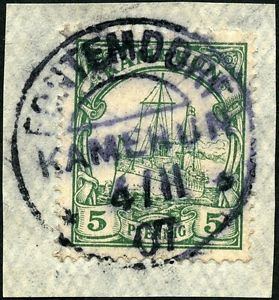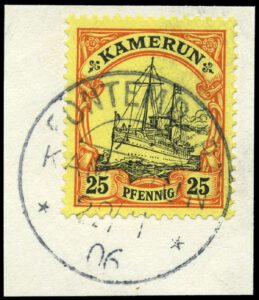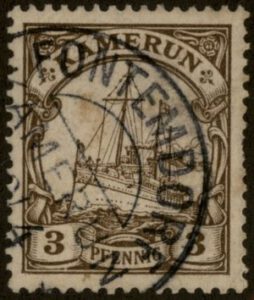Vincent Lockhart
The colonial practice, both German and British, of naming an area after the local Fon or chief can create some confusion for those who are not familiar with the Bangwa area. The following is an attempt to clarify some of the names used and a map to make it easier to understand the places mentioned in this account of the German occupation.

In 1884 German colonial forces took control of the coastal stretch of Cameroon and appropriated vast tracts of land in order to establish areas for rubber and palm oil production. The immediate consequence for the native population was to have their property confiscated, their villages burned, their chiefs murdered or imprisoned and every adult forced to work unpaid for the German companies running the plantations. They named their new colony ‘Kamerun’.
Among their colonial contemporaries the Germans were unrivalled in their systematic cruelty towards the indigenous populations of their colonies (German South-East Africa, German South-West Africa, German Togoland and Kamerun). With death rates among workers soaring into the hundreds on the new Kamerun plantations and a desire to extend their control to the hinterland, expeditions were dispatched northwards to establish bases at places such as Nkongsamba, Kumba, Tinto and Bali.
Gustav Conrau
Part of that strategy was for representatives of the plantation companies to venture inland to secure more workers but they were also tasked with mapping out the country and discovering potential resources. One such agent was the German trader, explorer and collector, Gustav Conrau.
The account of his visits to Azi and what happened after his death are told in the three articles on this website, A Bangwa account of early encounters with the German colonial administration, The Bangwa and the Germans: A Tailpiece and The 1922 Bangwa Tribal Area Assessment Report. What I add here are bits of information I picked up from various sources during my years in Lebialem and which might be of interest.
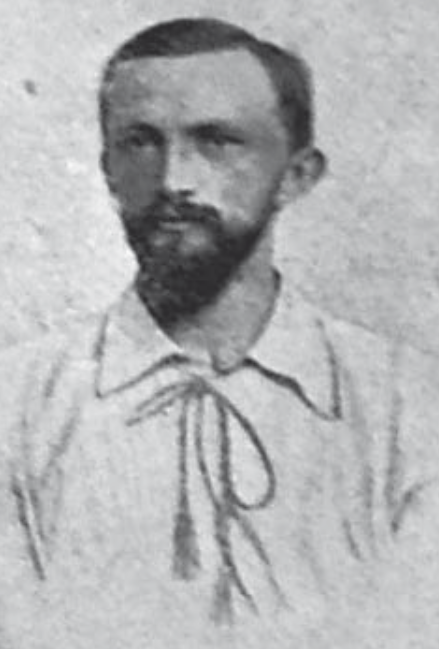

3 The most famous of these is the Bangwa Queen now on display in the Musée Dapper, Paris. From German records it would seem that Conrau acquired this piece during his first journey to Azi in 1898.
___________________________________
Conrau left Azi somewhere around September/October 1989 and travelled to the coast. He returned for a third time to Azi in late October/early November 1899 with a few servants in search of more labourers. The Bangwa population resisted his request for more labourers as none of the previous consignment had returned and word had begun to spread about the conditions on the plantations and the harsh treatment meted out by the German authorities there. Asonganyi, therefore, declined Conrau’s request. After an abortive attempt to get to Dschang, Conrau found himself stranded in Azi amid a population who were less and less enthusiastic about his presence. My informants [1] insisted that he was not held as a ‘prisoner’ as some reports claimed, including a note written by Conrau himself. His bearers had long since returned to the German garrison near Tinto and he was left with a few servants who grew increasingly nervous about the Bangwa’s animosity. His Bali translator falsely informed Conrau of plots to kill him and it was this which led to Conrau’s rather hysterical flight in the night and suicide in mid to late December 1899.[4] . The spot where he died was by the river directly beneath where the Catholic mission church at Belleh now stands. Conrau’s skull and one of his hands were removed from his body and the remains were buried in the sacred forest, the Lefem, near to the Fon’s palace. What became of his skull is uncertain but I did hear claims that it was kept in the Fon’s palace in Azi up until the 1950s.
___________________________________
Gustav Conrau in ‘Fontem’
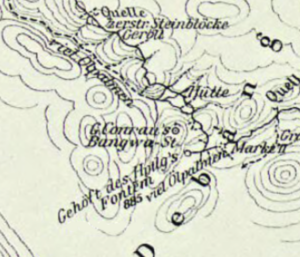
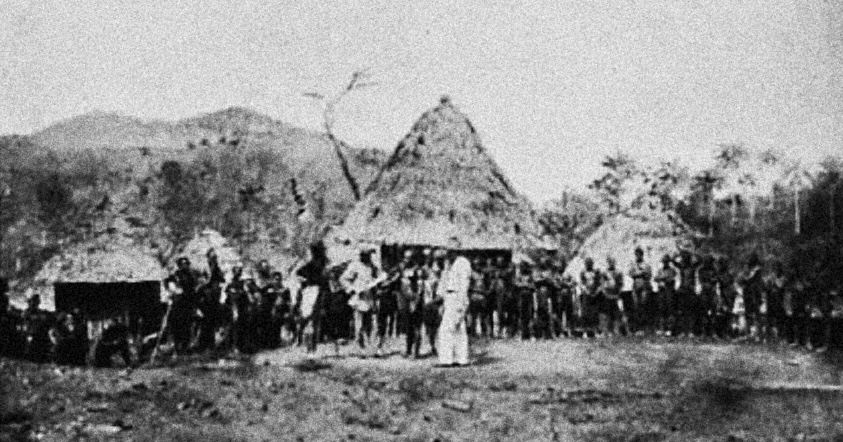
German traders in the Market in Azi – Fontemdorf
1901
The German garrison in Fontemdorf
Following the news of Conrau’s death, German troops under the command of Hptm. von Besser advanced on the Bangwa area from Tinto in late February 1900 and met stiff resistance at Fossungwenchen on the banks of the River Bago. Traces of the Bangwa ramparts can still be seen to this day. About 30 Bangwa were killed in the fighting and some hours later the German force reached Azi which it found abandoned as the population, including the Fon, Fontem Asonganyi, had escaped into the forest.
A second and larger punitive expedition led by Schutztruppe commander von Pavel travelled from Tinto and began its attack on the Bangwa country on the 11th November 1901. The force split into two contingents at the village of Takwai just west of Fossungwenchen. The first group, led by von Pavel, attacked across the ford at Fossungwenchen and made directly towards Azi. The other went northwards along the river Bago to enter the Bangwa lands at Lower Foto in the north west to make a flanking manoeuvre down through Lewoh (Fotabong I) and reached Azi a few days later.[5]
_________________________________
Asonganyi continued to hide in the forest and eventually settled in a cave in the area of Mbindia several kilometres north-east of Azi. From there it is said that he conducted a sporadic guerrilla war against the Germans but the extent of his activities is open to question as he and his followers were armed only with swords, spears and ancient Dane guns (early 19th century long-barrelled flintlock muskets). They were certainly no match for modern German rifles and machine guns. The Germans installed one of Asonganyi’s sons, Ajongakoh, as a puppet ruler. Asonganyi was eventually captured in 1911 after being betrayed by a man from Essoh Attah (Foreke Cha-Cha) who had quarrelled with him over a woman. Asonganyi was then sent into exile in Garoua in the far north of Kamerun. When Asonganyi was reinstated as Fon by the British after the defeat of the Germans in Kamerun in 1914, Ajongakoh left for Mamfe, a Bayang town 80km to the west, where he died in poverty in the 1930s.
Several months after the defeat of the Bangwa in November 1901 Hauptmann (Lieutenant) Emil Rausch
the Germans maintained a small military force in Azi but on the 4th April 1903 the military garrison at Tinto was moved to Azi which the Germans renamed ‘Fontemdorf’.
January 1902 – Von Pavel – 2,000 labourers as compensation
